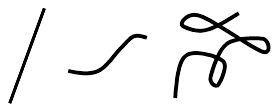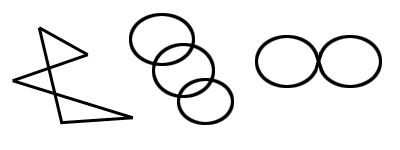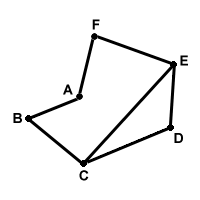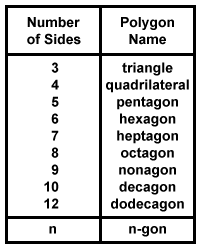Please wait while we process your payment
If you don't see it, please check your spam folder. Sometimes it can end up there.
If you don't see it, please check your spam folder. Sometimes it can end up there.
Please wait while we process your payment
Get instant, ad-free access to our grade-boosting study tools with a 7-day free trial!
Learn more



This site is protected by reCAPTCHA and the Google Privacy Policy and Terms of Service apply.
Create Account
Select Plan
Payment Info
Start 7-Day Free Trial!

Annual
2-49 accounts
$22.49/year + tax
50-99 accounts
$20.99/year + tax
Select Quantity
Price per seat
$29.99 $--.--
Subtotal
$-.--
Want 100 or more? Request a customized plan
You could save over 50%
by choosing an Annual Plan!

SAVE OVER 50%
compared to the monthly price!
| Focused-studying | ||
| PLUS Study Tools | ||
| AP® Test Prep PLUS | ||
| My PLUS Activity | ||
$22.49/month + tax
Save 25%
on 2-49 accounts
$20.99/month + tax
Save 30%
on 50-99 accounts
| Focused-studying | ||
| PLUS Study Tools | ||
| AP® Test Prep PLUS | ||
| My PLUS Activity | ||
No Fear provides access to Shakespeare for students who normally couldn’t (or wouldn’t) read his plays. It’s also a very useful tool when trying to explain Shakespeare’s wordplay!
Erika M.
I tutor high school students in a variety of subjects. Having access to the literature translations helps me to stay informed about the various assignments. Your summaries and translations are invaluable.
Kathy B.
Teaching Shakespeare to today's generation can be challenging. No Fear helps a ton with understanding the crux of the text.
Kay H.
No Fear provides access to Shakespeare for students who normally couldn’t (or wouldn’t) read his plays. It’s also a very useful tool when trying to explain Shakespeare’s wordplay!
Erika M.
I tutor high school students in a variety of subjects. Having access to the literature translations helps me to stay informed about the various assignments. Your summaries and translations are invaluable.
Kathy B.
Teaching Shakespeare to today's generation can be challenging. No Fear helps a ton with understanding the crux of the text.
Kay H.
Create Account
Select Plan
Payment Info
Start 7-Day Free Trial!
You will only be charged after the completion of the 7-day free trial.
If you cancel your account before the free trial is over, you will not be charged.
You will only be charged after the completion of the 7-day free trial. If you cancel your account before the free trial is over, you will not be charged.
Order Summary
Annual
7-day Free Trial
SparkNotes PLUS
$29.99 / year
Annual
Quantity
51
PLUS Group Discount
$29.99 $29.99 / seat
Tax
$0.00
SPARK25
-$1.25
25% Off
Total billed on Nov 7, 2024 after 7-day free trail
$29.99
Total billed
$0.00
Due Today
$0.00
Promo code
This is not a valid promo code
Card Details
By placing your order you agree to our terms of service and privacy policy.
By saving your payment information you allow SparkNotes to charge you for future payments in accordance with their terms.
Powered by stripe
Legal
Google pay.......



Please wait while we process your payment

Sorry, you must enter a valid email address
By entering an email, you agree to our privacy policy.
Please wait while we process your payment

Sorry, you must enter a valid email address
By entering an email, you agree to our privacy policy.
Please wait while we process your payment

Your PLUS subscription has expired
Please wait while we process your payment
Please wait while we process your payment

Defining a Polygon
When points or lines are arranged in some formation, rarely does it result in a recognizable geometric figure. Well-known shapes like squares and triangles are actually only subsets of larger groups of geometric figures and other collections of points in space.
One of the easiest and most common collections of points in space is a curve. A curve can be any continuous arrangement of points, straight or curved, in space. A curve can be defined as the trace of the motion of a point in space. So a curve is like a path through space by which a point could travel. For our purposes, we'll only consider curves that lie in a plane. A curve is continuous, meaning that there aren't any gaps or holes in the curve; any point on a curve can be reached from another point on the curve without leaving the curve. A dotted line, for example, is not a curve. Here are some examples of curves below.

A curve whose starting point is also its endpoint is called a closed curve. The reason for this is that such a curve encloses a region in the plane. A simple closed curve is an even more specific kind of curve: one that is closed, and doesn't intersect itself. The region enclosed by a simple closed curve is not divided by any part of the curve. Closed curves sometimes intersect themselves, but not simple closed curves. Below are some closed curves and simple closed curves.

A polygon is one type of simple closed curve. A polygon is the union of three or more line segments whose endpoints meet. The segments are called the sides of the polygon. The points at which the segments meet (always the endpoints of the segments) are called vertices. Segments that share a vertex are called adjacent sides. Vertices next to each other are called consecutive vertices. A segment whose endpoints are nonadjacent vertices is called a diagonal. See the picture below.

A polygon is named for its vertices, but the vertices must be listed in order. It doesn't matter which direction the order goes, as long as consecutive vertices are next to each other in the name. The first and last letters in the name, of course, are consecutive vertices, but won't be listed next to each other. For example, the polygon above could be called BCDEFA, or EDCBAF, or some other name incorporating the six vertices in order.
Polygons can be classified and named based on how many sides they have. In the
table below are these names.

Please wait while we process your payment





